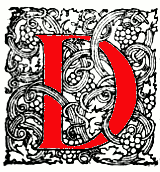
Detailed descriptions of the environment lure the reader into the narrative of The Mysteries of Udolpho (1794) by Anne Radcliffe. The figurative imagery used to describe nature matches the mental state of Emily. Contrasts in the clouds cause her to move from "awe" to "rapture," as billowing, surging clouds give way to more thinly spread ones that allow her to see the landscape below.
Dickens uses descriptions of nature in much the same way. He, like Radcliffe, tends first to introduce the environment and then reveal the character's placement in it. Radcliffe describes the cliffs, the clouds, and the landscape below before introducing Emily. Dickens opens many scenes with a description of the weather, such as in chapter 3, which begins, "It was a rimy morning and very damp."
Radcliffe and Dickens both personify aspects of weather: Radcliffe's clouds travel about like wild animals rolling through the sky, gathering together and spreading apart, whereas Dickens mentions "the distant savage lair from which the wind was rushing," creating a similiar chaotic image of nature. Dickens, to a much greater extent than Radcliffe does in this passage, uses weather to reveal the mental and emotional state of the protagonist. The scene where Magwitch reveals himself to the benefactor begins with a description that foreshadows Pip's stormy and muddled emotional state: "It was wretched weather; stormy and wet, stormy and wet; and mud, mud, mud, deep in all the streets." Both authors draw connections between the wide variety of human emotions and the great contrast that can be found within nature.
Created 1988
Entered Victorian Web July 2000